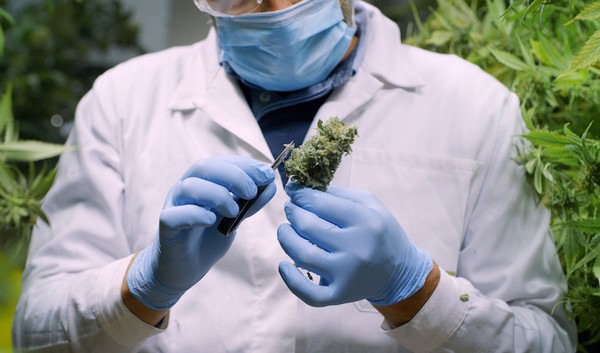In late 2020, Valoya and Hohenheim University embarked on a 3-year-long research partnership aimed at better understanding how light affects the cannabis plant. Due to regulatory restrictions, it has been very difficult, if not impossible, to study cannabis in most places around the world, up to recent times. Even though cannabis is slowly being decriminalized and is entering the mainstream, there is very little scientific data on any aspect of its cultivation, processing, and use. This ambitious research partnership is focused on changing that by conducting 6 scientific studies over the three-year period studying plant morphology and chemical composition under varying growth conditions.

The first results are out. Data from the first trial has been published in the Plants Journal in an article called Impact of Three Different Light Spectra on the Yield, Morphology and Growth Trajectory of Three Different Cannabis sativa L. Strains (Reichel et al.2021).
The study was conducted in greenhouse conditions using LED and ceramic metal halide lights. Three cannabis strains were tested under the light treatments, and the set-up was created three times in separate greenhouse compartments to ensure high data validity. Measurement focused on flower yield, cannabinoid composition, and terpene profiles. The morphology analysis included all plant parts such as main and side buds, main and side leaves, main and branch stems etc.
The findings show that LED conditions create 16% more dry weight in branches and 20% more stem dry weight. When comparing the total dry yield of the plant, we can see that LED created 30% more biomass. In terms of flower dry weight, Valoya’s Solray385 spectrum resulted in 31% more mass compared to CMH. This is due to the spectrum’s ability to drive flower growth in side branches. Outside of this research project, Solray385 is a cannabis-specific spectrum, typically used in large-scale, professional cultivation.
The analysis of the cannabinoid and terpene profiles is undergoing and will follow.
The German Federal Ministry for Economic Affairs and Energy is the primary funder of the project. More data will be published in peer-reviewed journals as the other 5 planned trials are complete. This research project is led by Prof. Dr. Simone Graeff-Hönninger and Mr. Philipp Reichel, PhD student.
For more information: Valoya
Valoya
[email protected]
www.valoya.com
